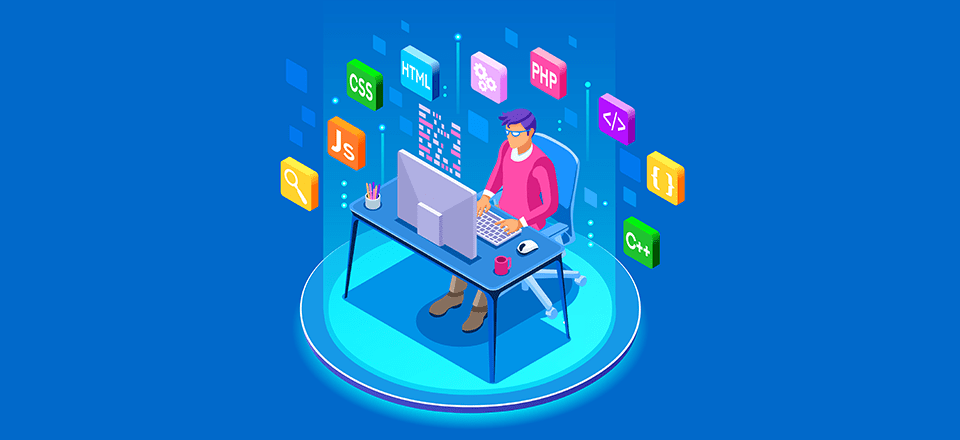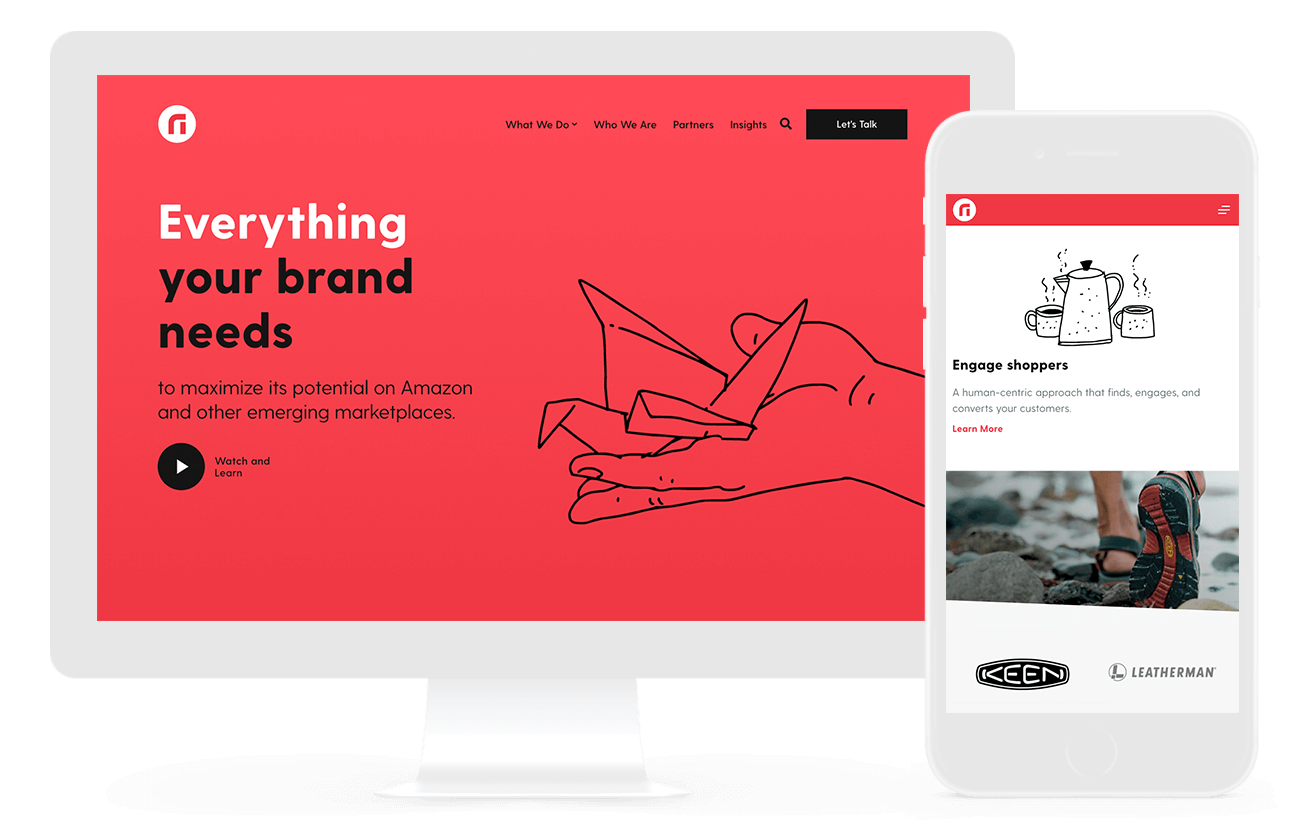All Categories
Featured
Table of Contents
- – Web Design Vs. Web Development - Upwork Tips a...
- – Web Design Services - Networksolutions.com Ti...
- – What Is Web Design? The Ultimate Guide To Web...
- – Awwwards - Website Awards - Best Web Design T...
- – Web Designer: Learn The 9 Skills You Need In ...
- – Top Web Design Companies - Find Web Designers...
- – Why Web Design Is Dead - - Ux Magazine Tips ...
- – What Is A Web Designer? (2022 Guide) - Brain...
- – Learn Web Design With Online Courses, Classe...
- – Lifted Logic: Web Design In Kansas City - Se...
- – Otc Web Design Girdwood, Alaska - Web Design...
Web Design Vs. Web Development - Upwork Tips and Tricks:
Quick summary Functionality and the utility, not the visual design, figure out the success or failure of a site. Because the visitor of the page is the only person who clicks the mouse and therefore chooses whatever, user-centric design has actually developed as a standard approach for successful and profit-oriented web style - web design frederick md.
and the energy, not the visual style, identify the success or failure of a website. Since the visitor of the page is the only individual who clicks the mouse and for that reason chooses everything, user-centric style has actually become a standard approach for successful and profit-oriented website design. If users can't utilize a function, it might as well not exist.
g. where the search box need to be placed) as it has actually already been performed in a variety of articles; instead we focus on the techniques which, utilized effectively, can result in more sophisticated design decisions and simplify the procedure of perceiving provided information. Please see that you might be interested in the usability-related articles we have actually published prior to: Principles Of Great Site Style And Effective Web Design Guidelines, In order to use the concepts correctly we initially need to understand how users connect with sites, how they believe and what are the basic patterns of users' behavior.
Web Design Services - Networksolutions.com Tips and Tricks:
Visitors glimpse at each brand-new page, scan some of the text, and click the first link that captures their interest or slightly resembles the thing they're looking for. There are large parts of the page they don't even look at. The majority of users look for something fascinating (or helpful) and clickable; as quickly as some promising candidates are found, users click.
If a page provides users with high-quality content, they want to jeopardize the material with ads and the style of the website. This is the reason not-that-well-designed websites with top quality content acquire a lot of traffic over years. Content is more crucial than the design which supports it.

Users don't check out, they scan. Notice how "hot" locations abrupt in the middle of sentences. This is common for the scanning process. Really simple concept: If a website isn't able to meet users' expectations, then designer failed to get his task done appropriately and the business loses cash. The greater is the cognitive load and the less user-friendly is the navigation, the more ready are users to leave the website and search for options.
What Is Web Design? The Ultimate Guide To Website Design ... Tips and Tricks:
Neither do they scan web page in a linear fashion, going sequentially from one website section to another one. Instead users satisfice; they pick the first reasonable choice. As quickly as they discover a link that appears like it might lead to the goal, there is a great possibility that it will be instantly clicked.
It does not matter to us if we comprehend how things work, as long as we can use them. If your audience is going to imitate you're creating billboard, then design fantastic billboards." Users wish to be able to control their internet browser and count on the consistent data discussion throughout the website.
If the navigation and website architecture aren't instinctive, the variety of question marks grows and makes it harder for users to comprehend how the system works and how to get from point A to point B. A clear structure, moderate visual clues and easily recognizable links can assist users to find their course to their objective.
Awwwards - Website Awards - Best Web Design Trends Tips and Tricks:

Given that users tend to explore sites according to the "F"-pattern, these three statements would be the very first components users will see on the page once it is loaded. The design itself is easy and user-friendly, to understand what the page is about the user requires to search for the answer.
When you've attained this, you can communicate why the system is helpful and how users can benefit from it. People won't use your web site if they can't find their method around it. 2. Don't Misuse Users' Patience, In every job when you are going to offer your visitors some service or tool, attempt to keep your user requirements minimal.
Newbie visitors are willing to, not filling long web forms for an account they might never use in the future. Let users explore the website and discover your services without forcing them into sharing private information. It's not affordable to require users to go into an e-mail address to check the feature.
Web Designer: Learn The 9 Skills You Need In 2022 - Skillcrush Tips and Tricks:
Stikkit is an ideal example for an user-friendly service which requires almost absolutely nothing from the visitor which is inconspicuous and reassuring. And that's what you want your users to feel on your website. Obviously, Termite needs more. However the registration can be carried out in less than 30 seconds as the type has horizontal orientation, the user doesn't even need to scroll the page.
A user registration alone is enough of an impediment to user navigation to minimize inbound traffic. 3. Handle To Focus Users' Attention, As sites offer both static and vibrant material, some elements of the user interface bring in attention more than others do. Obviously, images are more captivating than the text just as the sentences marked as bold are more attractive than plain text.
Focusing users' attention to particular locations of the site with a moderate usage of visual aspects can help your visitors to get from point A to point B without thinking of how it actually is supposed to be done. The less enigma visitors have, the they have and the more trust they can develop towards the business the website represents.
Top Web Design Companies - Find Web Designers Here Tips and Tricks:
Strive For Function Direct exposure, Modern web styles are normally slammed due to their approach of assisting users with visually appealing 1-2-3-done-steps, large buttons with visual results etc. From the style point of view these elements in fact aren't a bad thing.
The website has 9 primary navigation alternatives which are noticeable at the first glance. What matters is that the content is well-understood and visitors feel comfy with the way they communicate with the system.
Rather a price: simply what visitors are looking for. An optimum service for reliable writing is touse brief and succinct expressions (come to the point as rapidly as possible), use scannable layout (categorize the content, utilize several heading levels, use visual aspects and bulleted lists which break the circulation of uniform text blocks), usage plain and objective language (a promotion doesn't require to sound like advertisement; offer your users some sensible and unbiased reason why they ought to utilize your service or stay on your website)6.
Why Web Design Is Dead - - Ux Magazine Tips and Tricks:
Users are hardly ever on a site to take pleasure in the style; furthermore, in the majority of cases they are trying to find the details regardless of the design - web design frederick md. Make every effort for simpleness instead of complexity. From the visitors' viewpoint, the best website style is a pure text, with no ads or further content blocks matching precisely the query visitors used or the material they have actually been trying to find.
Finch plainly presents the information about the site and gives visitors a choice of options without overcrowding them with unneeded material. Not just does it help to for the visitors, but it makes it possible to perceive the information presented on the screen.
Complex structures are more difficult to check out, scan, examine and work with. If you have the choice in between separating two design sections by a visible line or by some whitespace, it's usually better to utilize the whitespace service. (Simon's Law): the better you handle to provide users with a sense of visual hierarchy, the easier your content will be to view.
What Is A Web Designer? (2022 Guide) - Brainstation® Tips and Tricks:
The very same conventions and guidelines should be used to all elements.: do the most with the least quantity of cues and visual components. Four significant indicate be considered: simplicity, clarity, diversity, and focus. Simpleness consists of just the elements that are most crucial for interaction. Clarity: all parts should be developed so their meaning is not unclear.
Conventions Are Our Friends, Traditional style of website elements doesn't lead to a boring website. In fact, as they decrease the finding out curve, the need to figure out how things work. It would be an usability nightmare if all sites had various visual discussion of RSS-feeds. That's not that various from our routine life where we tend to get utilized to standard principles of how we arrange data (folders) or do shopping (positioning of items).
understand what they're anticipating from a website navigation, text structure, search positioning etc. A normal example from use sessions is to equate the page in Japanese (assuming your web users don't know Japanese, e. g. with Babelfish) and provide your usability testers with a job to discover something in the page of different language.
Learn Web Design With Online Courses, Classes, & Lessons Tips and Tricks:
Steve Krug suggests that it's much better to, however make the most of conventions when you do not. 10. Test Early, Test Typically, This so-called TETO-principle needs to be applied to every website design job as use tests typically offer into substantial problems and concerns related to a provided design. Test not far too late, not too little and not for the wrong reasons.
Some important points to remember: according to Steve Krug, and screening one user early in the task is better than screening 50 near completion. Accoring to Boehm's very first law, mistakes are most frequent during requirements and design activities and are the more pricey the later they are removed.
That indicates that you develop something, test it, fix it and then check it once again. There may be problems which have not been found during the very first round as users were almost obstructed by other problems.
Lifted Logic: Web Design In Kansas City - Seo - Website ... Tips and Tricks:

This holds for designers too. After you have actually dealt with a website for few weeks, you can't observe it from a fresh point of view any longer. You know how it is developed and for that reason you understand exactly how it works you have the wisdom independent testers and visitors of your site would not have.
It can be linked to other areas such as graphic style, user experience, and multimedia arts, however is more appropriately seen from a technological perspective. It has become a big part of people's everyday lives. It is difficult to think of the Web without animated graphics, different designs of typography, background, videos and music.

During 1991 to 1993 the Internet was born. Text-only pages might be viewed using a simple line-mode web browser. In 1993 Marc Andreessen and Eric Bina, developed the Mosaic internet browser. At the time there were several web browsers, however the majority of them were Unix-based and naturally text heavy. There had actually been no integrated method to graphic style components such as images or noises.
Otc Web Design Girdwood, Alaska - Web Design & Google ... Tips and Tricks:
The W3C was produced in October 1994 to "lead the Web to its complete potential by establishing common procedures that promote its advancement and ensure its interoperability." This discouraged any one company from monopolizing a propriety web browser and programs language, which could have modified the impact of the Internet as a whole.
As this has taken place the innovation of the web has likewise carried on. There have likewise been substantial modifications in the method individuals use and access the web, and this has changed how websites are designed. Given that the end of the web browsers wars [] brand-new web browsers have been launched. Much of these are open source meaning that they tend to have faster development and are more encouraging of new requirements.
Learn more about Lovell Media Group LLC or TrainACETable of Contents
- – Web Design Vs. Web Development - Upwork Tips a...
- – Web Design Services - Networksolutions.com Ti...
- – What Is Web Design? The Ultimate Guide To Web...
- – Awwwards - Website Awards - Best Web Design T...
- – Web Designer: Learn The 9 Skills You Need In ...
- – Top Web Design Companies - Find Web Designers...
- – Why Web Design Is Dead - - Ux Magazine Tips ...
- – What Is A Web Designer? (2022 Guide) - Brain...
- – Learn Web Design With Online Courses, Classe...
- – Lifted Logic: Web Design In Kansas City - Se...
- – Otc Web Design Girdwood, Alaska - Web Design...
Latest Posts
Web Design And Development - Invision Tips and Tricks:
Web Design Icon:
Web Design Studio & Digital Marketing Agency • Gravitate Tips and Tricks:
More
Latest Posts
Web Design And Development - Invision Tips and Tricks:
Web Design Icon:
Web Design Studio & Digital Marketing Agency • Gravitate Tips and Tricks: